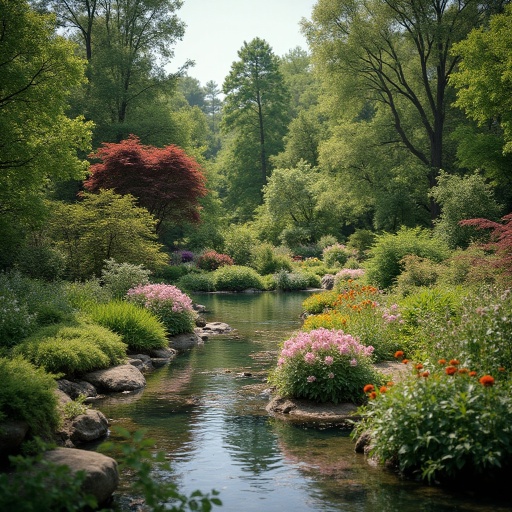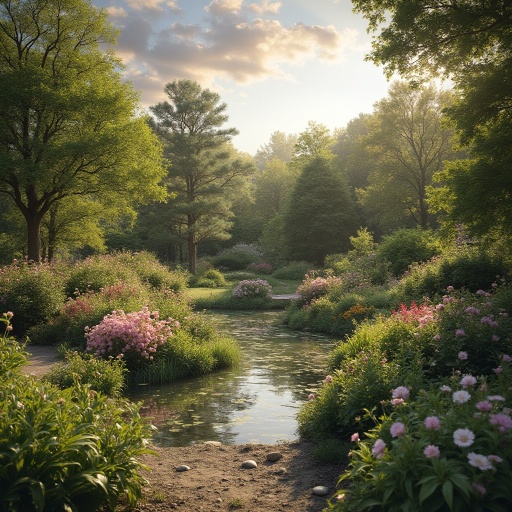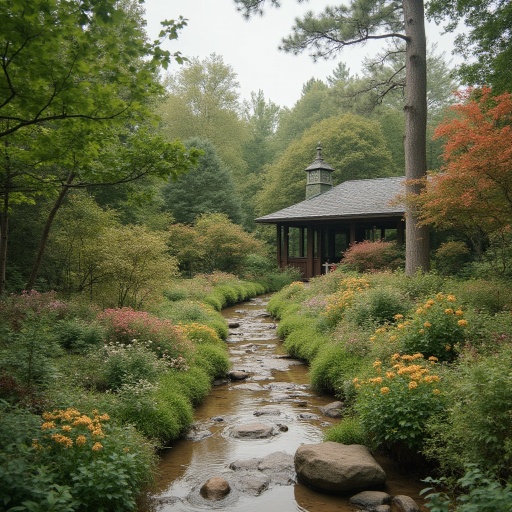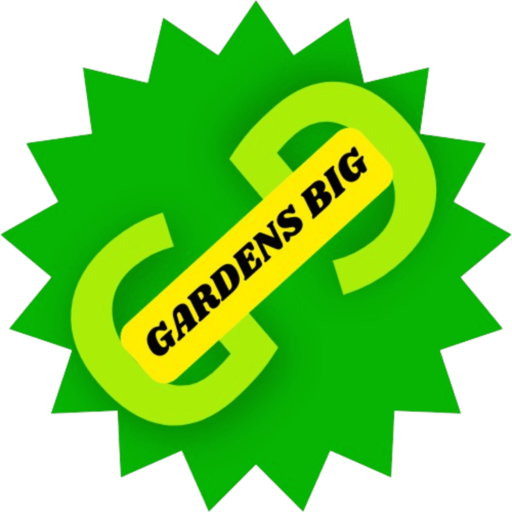Minnesota Landscape Arboretum: Inspiring Garden Design Ideas for Every Season

Did you know that spending just one hour in a well-designed garden can reduce stress hormone levels by up to 21%? The Minnesota Landscape Arboretum offers exactly this kind of therapeutic escape, along with countless garden design ideas that can transform your own outdoor space. This 1,200-acre horticultural treasure serves as both a living laboratory and a source of endless inspiration for garden enthusiasts, landscape architects, and casual visitors alike. Whether you’re looking to redesign your backyard or simply appreciate innovative landscaping designs, the Arboretum provides the perfect blend of artistic vision and botanical expertise.
Essential Information About Minnesota Landscape Arboretum
The Minnesota Landscape Arboretum stands as the largest public garden in the Upper Midwest, featuring more than 5,000 plant varieties across dozens of meticulously designed garden spaces. Located in Chaska, Minnesota, just 25 miles southwest of Minneapolis, this botanical wonderland offers year-round inspiration for landscape designs ranging from formal gardens to naturalistic woodland settings.
Each garden area showcases different approaches to garden design:
- Japanese Garden with minimalist aesthetics and careful stone placement
- Rose Garden featuring both traditional and innovative planting patterns
- Annual Garden displaying seasonal color schemes and arrangements
- Woodland gardens demonstrating native plant landscaping techniques
- Home Demonstration Garden with practical landscaping ideas for residential spaces
The Arboretum also features extensive collections of trees, shrubs, and perennials that demonstrate effective landscaping strategies for the challenging Minnesota climate.
Timing
A thorough exploration of the Minnesota Landscape Arboretum typically requires 3-4 hours, though many visitors spend an entire day wandering through its diverse garden spaces. According to visitor surveys, the average visit lasts approximately 3.5 hours, with many garden enthusiasts returning seasonally to observe changing landscape designs throughout the year. For those specifically seeking garden design ideas, plan to spend at least 2 hours in the demonstration gardens and themed collections. The Arboretum’s Three-Mile Drive offers a comprehensive overview for those with limited time, while dedicated gardeners might want to allocate additional time for the Home Demonstration Garden and specialized collections.
Step-by-Step Garden Design Exploration
Step 1: Begin with the Visitor Center Gardens
Start your garden design journey at the Visitor Center, where the entry gardens showcase fundamental landscaping principles. These gardens demonstrate effective use of color, texture, and plant layering—essential components of successful garden design. Pay particular attention to the seasonal containers and border plantings, which provide transferable ideas for home landscaping projects. The terraced gardens here also illustrate how to work with slopes and create visual interest through elevation changes.
Step 2: Explore the Home Demonstration Garden
Next, visit the Home Demonstration Garden, where practical garden design ideas come to life in residential-scale settings. This area is specifically designed to inspire home gardeners with achievable landscaping designs. Note how different garden rooms flow together while maintaining distinct themes. The demonstration gardens showcase various gardening styles from formal to casual, with particular emphasis on sustainable landscaping techniques appropriate for Minnesota’s climate. Take photos of plant combinations and structural elements that might work in your own garden.
Step 3: Experience the Themed Collections
Wander through the themed garden collections, each offering specialized garden design ideas. The Japanese Garden demonstrates principles of simplicity and asymmetrical balance, while the Perennial Garden shows effective plant groupings for continuous seasonal interest. The Kitchen Garden offers designs for productive yet beautiful food-growing spaces. As you explore, notice how pathways direct movement, how focal points draw the eye, and how plant massing creates impact in landscape designs.
Step 4: Take the Three-Mile Drive
Drive or walk the Three-Mile Drive to observe larger-scale landscaping designs including woodland gardens, naturalistic plantings, and formal garden spaces. This route showcases how to integrate different gardening styles into a cohesive landscape design. Particularly noteworthy are the transitions between garden areas, which demonstrate effective techniques for blending distinct landscaping zones. The drive also illustrates principles of garden design such as enclosure, mystery, and rhythm across extended spaces.
Step 5: Record and Reflect on Design Elements
Throughout your visit, document inspiring garden design ideas through photos, sketches, or notes. The Arboretum provides identification markers for most plants, making it easy to record specific varieties for your own landscaping projects. Consider creating a digital collection of favorite garden vignettes, hardscaping elements, and plant combinations. Before leaving, visit the Arboretum’s gift shop, which offers gardening books with additional landscaping designs and techniques to try at home.

Technical and Artistic Information
The Minnesota Landscape Arboretum was founded in 1958 by the University of Minnesota’s Horticultural Research Center, building on land first acquired for apple breeding research in 1908. Dr. Leon C. Snyder, head of the University’s Department of Horticultural Science, is credited as the founding director who transformed the initial 160 acres into a public garden. Today, the Arboretum encompasses 1,200 acres in Chaska, Minnesota (Carver County), at an elevation of approximately 900 feet above sea level.
The climate features four distinct seasons with hot summers (averaging 83°F in July) and cold winters (averaging 23°F in January), creating a challenging USDA Hardiness Zone 4 environment for garden design. This variable climate has shaped the Arboretum’s approach to landscaping designs, emphasizing plants and techniques that thrive despite temperature extremes. Water resources include several natural wetlands, man-made ponds, and Spring Peeper Meadow, a restored wetland that demonstrates effective water management in landscape design.
The Arboretum’s mission combines public education, research, and conservation, with specific goals to:
- Demonstrate sustainable garden design ideas for the Upper Midwest
- Conserve and propagate native and adapted plant species
- Research climate-resilient landscaping practices
- Educate the public on effective gardening techniques
- Provide inspiration for home landscape designs
Garden varieties include:
- Formal Gardens: Including the Morgan and Margot Siegel Terrace Garden, featuring geometric patterns and defined edges in a classic formal landscaping style
- Naturalistic Gardens: Such as the Prairie Garden and woodland areas that demonstrate how to incorporate native plants into landscape designs
- Specialty Gardens: The Chinese Garden, Japanese Garden, and Maze Garden each showcase distinctive cultural garden design approaches
- Seasonal Gardens: Annual Garden and Spring Peeper Meadow highlight designing for seasonal interest
- Research Collections: Specialized collections of hostas, azaleas, ornamental grasses, and maples demonstrate how to effectively use plant families in garden design
Distinctive architectural elements include:
- The Snyder Building with its soaring atrium and exhibition space
- The Sensory Garden with accessibility-focused design features
- The Meyer-Deats Conservatory for tropical plant display
- The Tashjian Bee and Pollinator Discovery Center, showcasing pollinator-friendly garden design
- The Harrison Sculpture Garden, demonstrating the integration of art with landscape design
Visitor amenities include:
- Multiple educational facilities including the Learning Center and Red Barn
- The Arboretum Library containing over 25,000 volumes on horticulture and garden design
- Cafe and tea room offering seasonal menus
- Gift shop featuring gardening tools and reference materials
- 12.5 miles of garden paths and hiking trails
- Three-Mile Drive for automotive or bicycle tours
- MacMillan Auditorium and other event spaces available for weddings and corporate functions
The Arboretum hosts numerous festivals and events throughout the year:
- Spring Garden Festival (May)
- Summer Garden Party (July)
- AppleHouse harvest celebration (September-October)
- Gingerbread Wonderland (December)
- Arboretum’s Toast & Taste fundraiser (June)
- Auxiliary Plant Sale (May)
Visitors can access the Arboretum daily from 8 AM to 8 PM (April-October) or 8 AM to 4 PM (November-March), with admission fees of $15 for adults, $10 for children 15 and under, and free for members. Memberships range from $60-$150 annually. Special events may have different hours and entry fees.
The Arboretum employs approximately 80 full-time staff and 200 seasonal workers, along with more than 1,000 volunteers. Management operates under the oversight of the University of Minnesota with a director and administrative board. Garden maintenance includes sustainable practices such as rainwater collection, integrated pest management, and composting—all of which provide examples of environmentally conscious landscaping techniques.
Visitor demographics include approximately 500,000 annual visitors, with 85% from the Twin Cities metropolitan area, 10% from greater Minnesota, and 5% international visitors. The Arboretum’s garden design ideas have influenced countless home landscapes throughout the region, with visitors frequently citing specific Arboretum features as inspiration for their own gardening projects.

Healthy Alternatives to Traditional Garden Visits
While the Minnesota Landscape Arboretum offers exceptional garden design inspiration, consider these alternatives for complementary experiences:
- Como Park Conservatory in St. Paul provides year-round indoor garden design ideas, particularly valuable during Minnesota winters
- Eloise Butler Wildflower Garden in Minneapolis focuses exclusively on native plant landscaping designs
- Minnesota Horticultural Society demonstration gardens showcase residential-scale landscaping ideas
- University of Minnesota Extension Master Gardener demonstration gardens throughout the state offer localized garden design approaches
- Combine your Arboretum visit with self-guided tours of award-winning residential landscapes featured in regional garden tours
For families with diverse interests, consider:
- Scheduling your visit during one of the Arboretum’s family-friendly events that combine garden exploration with activities
- Utilizing the Arboretum’s scavenger hunt maps to engage children while parents study landscaping techniques
- Mixing garden design observation with hiking the Arboretum’s woodland trails
- Arranging a split visit where some family members attend a gardening workshop while others explore the grounds
Introductory Suggestions for First-Time Visitors
For a truly engaging first experience with the Arboretum’s garden design ideas:
Start with a guided tram tour to gain an overview of the major landscape features and garden styles. These 45-minute tours provide context for self-exploration later. After the tour, focus on gardens most relevant to your own landscaping needs—shade gardens for wooded properties, drought-tolerant plantings for sunny sites, or native landscapes for eco-conscious gardeners.
Personalized approaches might include:
- Photography enthusiasts should visit during “golden hour” lighting in early morning or late afternoon
- Note-takers can download the Arboretum’s plant database app for easy reference
- Those seeking professional guidance can schedule a visit during one of the monthly “Ask the Expert” days
- Design-focused visitors should bring sketch pads to record garden layouts and planting patterns
Consider timing your visit to coincide with the bloom time of plants you’re interested in incorporating into your own landscape design.
Common Mistakes to Avoid
When seeking garden design inspiration at the Arboretum, avoid these common pitfalls:
- Overlooking seasonal planning: Many visitors focus only on summer displays, missing the opportunity to create year-round interest in their own landscapes. The Arboretum’s Winter Garden demonstrates effective design strategies for Minnesota’s longest season.
- Ignoring plant tags: According to Arboretum staff, 65% of visitors fail to note the specific cultivars when photographing plants, making it difficult to source the exact varieties later. Always record the complete plant information.
- Attempting direct replication: Rather than trying to exactly reproduce the Arboretum’s large-scale designs, focus on adaptable principles and plant combinations that can be scaled to residential settings.
- Neglecting site conditions: The Arboretum benefits from professional maintenance and ideal growing conditions. Pay attention to the educational signage explaining how designs can be modified for different site challenges.
- Rushing the experience: Surveys show that visitors who spend less than two hours at the Arboretum report lower satisfaction and fewer applicable garden design ideas than those who allocate sufficient time.
Visitor Encouragement Tips
To maximize your garden design inspiration at the Arboretum:
Arrive prepared with a basic understanding of your own garden’s conditions—sun exposure, soil type, and hardiness zone. This knowledge will help you identify relevant landscaping designs and plant selections. Consider joining one of the Arboretum’s many hands-on workshops, which occur most weekends and provide direct experience with garden design techniques.
For maintaining a fresh perspective:
- Visit during different seasons to observe how garden designs evolve throughout the year
- Attend early morning photography sessions for optimal light and fewer crowds
- Participate in volunteer gardening sessions to learn professional techniques
- Bring a small notebook to sketch layout ideas and record plant combinations
- Wear comfortable shoes and weather-appropriate clothing to ensure you can explore thoroughly
Conclusion
The Minnesota Landscape Arboretum stands as an unparalleled resource for garden design ideas, offering inspiration for every style, scale, and gardening challenge. Through its diverse collections, demonstration gardens, and educational programs, visitors gain practical knowledge and creative inspiration to transform their own outdoor spaces. Whether you’re planning a complete landscape redesign or simply seeking to refresh a garden bed, the Arboretum provides living examples of effective, beautiful, and sustainable landscaping solutions.
We invite you to experience the Minnesota Landscape Arboretum firsthand and discover how its garden design ideas might inspire your next landscaping project. Share your favorite Arboretum-inspired garden transformations in the comments below, or subscribe to our newsletter for seasonal gardening updates and exclusive Arboretum event information.

Frequently Asked Questions
What is the best time of year to visit the Minnesota Landscape Arboretum for garden design ideas?
Each season offers unique design inspiration. Spring showcases bulb layouts and early-blooming perennials, summer displays peak color combinations, fall demonstrates effective use of foliage and structure, and winter reveals the importance of architectural elements in landscape design. For comprehensive inspiration, consider multiple visits throughout the year.
Are the garden designs at the Arboretum practical for home landscapes?
Yes, particularly in the Home Demonstration Garden, which specifically showcases residential-scale landscaping designs. While some Arboretum gardens are grand in scale, the design principles, plant combinations, and structural elements can be adapted for home gardens of any size.
Does the Arboretum offer professional advice for my specific garden design challenges?
The Arboretum hosts regular “Ask a Gardener” sessions where staff horticulturists provide personalized recommendations. Additionally, the Yard & Garden Information Desk in the Visitor Center offers resources for common landscaping questions, and the Arboretum’s educational classes frequently address specific garden design challenges.
How can I remember all the garden design ideas I see at the Arboretum?
The Arboretum encourages photography (for personal use) and provides plant identification throughout the gardens. Many visitors bring notebooks or use plant identification apps to record inspiring designs. The Arboretum also sells specialized garden journals in the gift shop specifically designed for recording landscaping ideas.
Are there garden design ideas for challenging conditions like shade or poor soil?
Absolutely. The Arboretum features specialized gardens demonstrating effective landscaping for various challenging conditions, including deep shade, slopes, wet areas, and drought-prone sites. Look for educational signage in these areas explaining the specific techniques and plant selections that make these designs successful.
